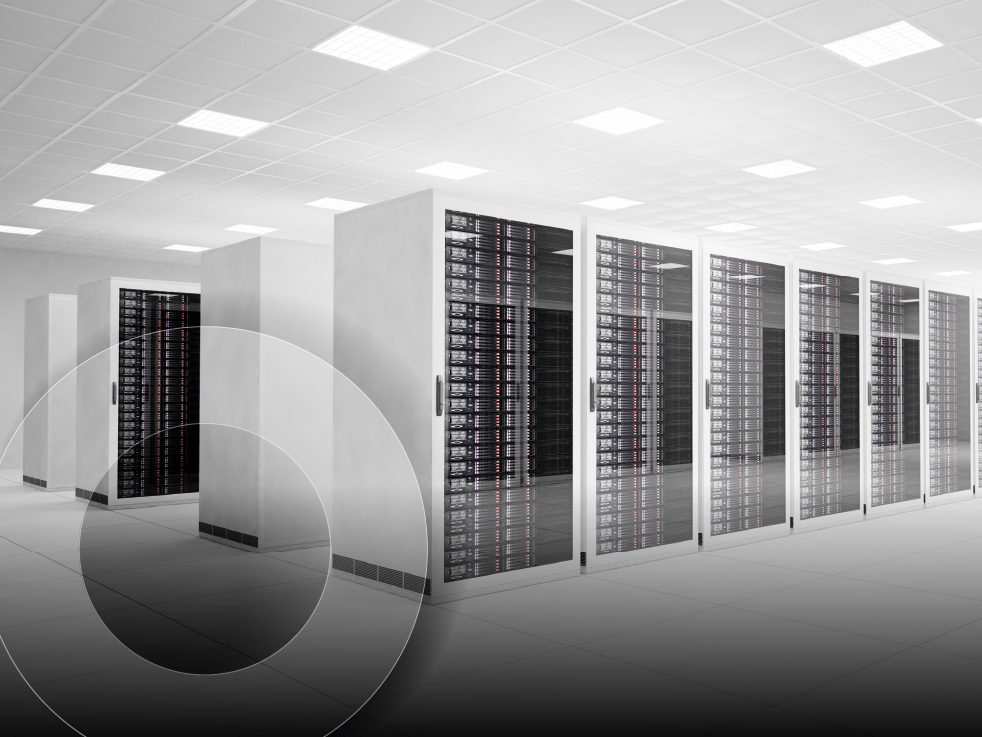Beat the heat: How to confidently make a cooler modern data center
Data centers are evolving. Your cooling methods should too.

Is it just us, or is it getting hot in your data center? With the advancement of AI and ML, data centers everywhere are struggling to maintain efficient systems while keeping the temperatures under control. Now more than ever, it’s essential to focus on power usage effectiveness (PUE) and cooling to ensure your data center doesn’t start to slump as it swelters. However, finding a solution isn’t a one-size-fits-all situation—and the cooling method you choose could spell life or death for your data center.
What are the power density trends?
Watching your consumption will mean optimizing your cooling, especially as data centers rapidly evolve. Remarkably, Uptime Institute’s 2023 predictions indicate a coming rise in power distribution, reaching up to 70 kW racks, a significant increase from the previous 10-15 kW average. This surge is fueled by the proliferation of unstructured data and growing reliance on data-intensive technologies like AI and ML. Their need for speed combined with low latency means your processors (and your wallet) will certainly be feeling the heat. To adapt, Intel’s latest server processors boast TDP ratings as high as 350 W, a considerable jump from the 120 W to 150 W processors of years past.
Bottom line: New workloads mean more computing power, which calls for new methods to maintain optimal performance and prevent overheating.
Luckily, you’ve got some options.
Cooling with air
To maintain high function, proper airflow is critical at both rack and data center levels. Managing it ensures efficient expulsion of hot air, making room for the cool breeze of efficiency. How you go about this, however, depends on the size, structure, and layout of your data center:
- Precision air conditioning (PAC): Precision air conditioning systems offer exacting control over temperature and humidity. Ideal for larger data centers, they facilitate zone-based cooling for specific areas or racks, ensuring that equipment operates within optimal conditions.
- Hot aisle/cold aisle containment: This strategy involves organizing data center layouts to create alternating hot and cold aisles. By enclosing hot aisles to direct hot air away from the equipment or enclosing cold aisles to channel cool air to server inlets, containment methods prevent hot spots and enhance overall cooling efficiency.
- In-row cooling units: Placed strategically between equipment racks, in-row cooling units deliver targeted cooling. This approach is particularly beneficial in high-density environments, ensuring that cooling is directed precisely where it’s most needed.
- Free cooling systems: Leveraging external ambient air and free cooling systems is a sustainable solution that’s especially effective in cooler climates. By using natural air for cooling during periods of lower demand, data centers can significantly reduce their overall energy consumption.
Although there are numerous airflow options, choosing the right solution might mean considering a different kind of cool.
Cooling with liquid
As electronic components continue to generate more heat, liquid cooling is becoming increasingly popular for efficient dissipation. This shift is driven by the liquid’s ability to handle higher thermal loads, providing a more energy-efficient solution.
Liquid cooling involves using water or specialized coolants to absorb and dissipate heat from electronic components. This is typically recommended for loads of 30-40 kW within a rack. It presents a more effective alternative to traditional air cooling not only for energy consumption but also for space optimization, as compact liquid cooling systems allow for greater equipment density within data center racks.
There are four types of liquid cooling that are reshaping the landscape:
- Direct-to-chip liquid cooling (cold plate cooling): This method involves attaching liquid-filled metal plates directly to heat-producing components for localized cooling. It ensures direct contact with the heat source for optimal results and is suitable for high-performance servers and GPUs.
- Immersion cooling: Submerging all servers or hardware components in a non-conductive liquid eliminates the need for traditional heat sinks or fans. This method offers uniform cooling, making it particularly effective in high-density environments.
- Two-phase liquid cooling: This approach involves utilizing a phase-change process, in which the liquid absorbs heat, vaporizes, and then condenses back into a liquid. Two-phase liquid cooling is employed in systems requiring precise temperature control.
- Rear door heat exchangers: Attached to the back of server racks, these devices live up to their name by exchanging hot air the servers produce for cool liquid. Enhancing cooling efficiency at the rack level, this method contributes to overall energy savings.
Knowing which to choose can depend on your specific data center. With so much at stake and so many factors to consider, it can be a hard decision to make alone. Fortunately, you don’t have to.
Stay cool, save money, partner up.
While the evolving world of data centers is not without its challenges, tackling these with efficiency will lay the foundation for a future-proof, energy-efficient, and high-performance organization. The best part? You can get started today.
Cool off with SHI’s comprehensive services designed to streamline and simplify your data center processes. As part of the integrated data center services (IDCS) department at SHI, our team can assist you in designing rack solutions that are tailored to your specific needs, including power and cooling requirements, to ensure optimal performance. Book a tour to learn how we can help you speed up deployment, reduce costs, and beat the heat today.




